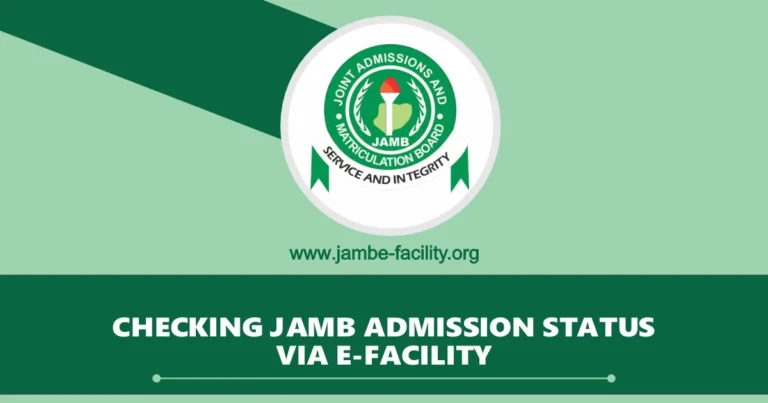Scored Below 140 in JAMB? See What to Do Next

If you scored below 140 in JAMB, don’t panic. The Joint Admissions and Matriculation Board (JAMB) has set the cut-off marks for admissions, with 140 being the minimum score required for universities, and 100 for Polytechnics and Colleges of Education.
Many candidates who write the UTME will not meet the JAMB cut off mark of 140 for University. What to do next? is the big question. There are still various options you can explore to pursue higher education in Nigeria.
This article carefully highlights the admission process in Nigeria, explains how cut-off marks work, and guides you on the best steps to take to still secure admission for yourself, if your JAMB score is below 140 in JAMB.
What to Do If You Scored Below 140 in JAMB
If you scored below 140 in JAMB, it might feel like a setback, but here are several options you can take to secure admission:
- Consider Polytechnics or Colleges of Education: Polytechnics and colleges of education usually have lower cut-off marks, with many accepting JAMB scores as low as 100. If your score falls between 100 and 139, consider applying to these institutions. While they may not have the same prestige as universities, polytechnics and colleges of education offer solid educational programs. Plus, you can always pursue a Higher National Diploma (HND) or apply for direct entry into a university after completing your studies at a polytechnic.
- Apply to State or Private Universities: Some state and private universities may accept students with lower JAMB scores. State universities often set their cut-off marks slightly lower than federal universities, while private universities are usually more flexible in their admission process. Keep in mind, though, that private universities can be expensive.
- Consider Changing Your Course: If your JAMB score is below 140 but you’re still set on attending a university, one option is to change your course to one with a lower departmental cut-off mark. Courses in fields like education, agriculture, or the arts typically have lower cut-off marks compared to more competitive programs like medicine, law, or engineering.
- Explore Direct Entry Options Later: Another option for students with a low JAMB score is to apply for a diploma or National Diploma (ND) program at a polytechnic or college of education. Once you complete this program, you can apply for direct entry into a university. This route allows you to bypass JAMB and enter university as a second-year student.
- Apply to a School of Nursing or Health Technology: For science students, another great option is applying to a School of Nursing or College of Health Technology. These institutions train students in specialized healthcare fields, and many of them accept lower JAMB scores. Programs such as Pharmacy Technology, Medical Laboratory Technology, and Environmental Health are available in these schools.
- Consider Retaking the JAMB Exam: If none of these options work for you, consider preparing for and retaking the JAMB exam. This gives you the chance to improve your score and reapply for your preferred course or institution.
Understanding Admission Stages in Nigeria
Gaining admission into Nigerian tertiary institutions involves a few stages, and understanding these stages is important if you scored below 140 in JAMB:
1. JAMB Examination
The first stage of securing admission into a university, polytechnic, or college in Nigeria is taking the Joint Admissions and Matriculation Board (JAMB) exam.
This is a computer-based test that typically consists of four subjects, and your score is out of 400. The JAMB score you achieve determines your eligibility for further screening by the institution of your choice.
2. Post-UTME Screening
After the JAMB exam, most institutions conduct a Post-UTME (Post Unified Tertiary Matriculation Examination) screening to further assess applicants.
Some schools may require you to sit for another test, while others might simply review your JAMB result alongside your O’level grades.
3. Cut-Off Marks
To be considered for admission, candidates must meet or exceed certain cut-off marks. Cut-off marks act as a threshold, indicating the minimum score required to apply for a particular course or institution. Meeting the cut-off mark allows you to move forward in the admission process.
Two Main Types of Admission Cut-Off Marks
When it comes to admission cut-off marks in Nigeria, there are two main types you should be aware of:
1. General JAMB Cut-Off Mark
This is the minimum score set by JAMB that qualifies a candidate to apply for admission to any institution. It varies by institution type, with universities often requiring a higher score than polytechnics or colleges of education.
In 2024, for example, JAMB set the general cut-off mark at 140 for universities and 100 for polytechnics and colleges of education.
However, this score alone doesn’t guarantee admission; it only makes you eligible to apply for the Post-UTME screening.
2. Institutional Departmental Cut-Off Mark
This is the more important cut-off mark. It is set by individual institutions and is specific to each course or department. For instance, a university’s engineering department may set a cut-off mark of 180, while its education department might require 160.
This mark is often based on the number of available spaces, the performance of candidates, and the competitiveness of the course. Scoring above this mark increases your chances of getting admitted.
Conclusion
If you scored below 140 in JAMB, it is not the end of your academic dreams. With so many alternatives available, exploring polytechnics, changing your course, or considering direct entry still gives you plenty of opportunities to achieve your educational goals. The key is to stay informed, weigh your options, and make strategic decisions.






